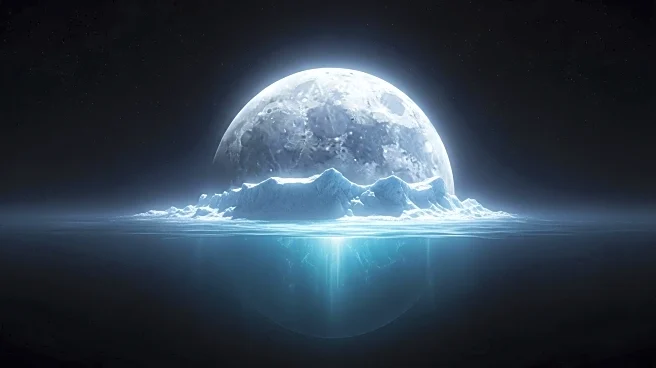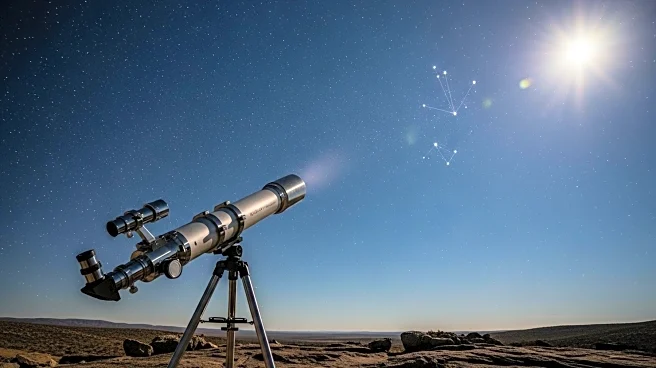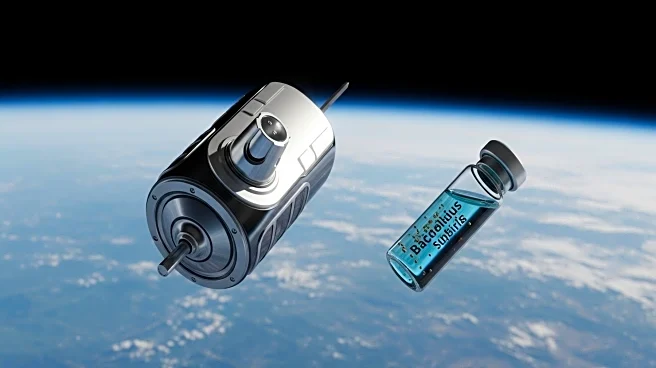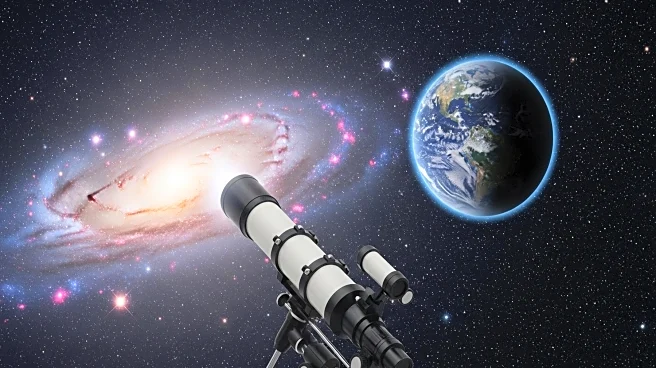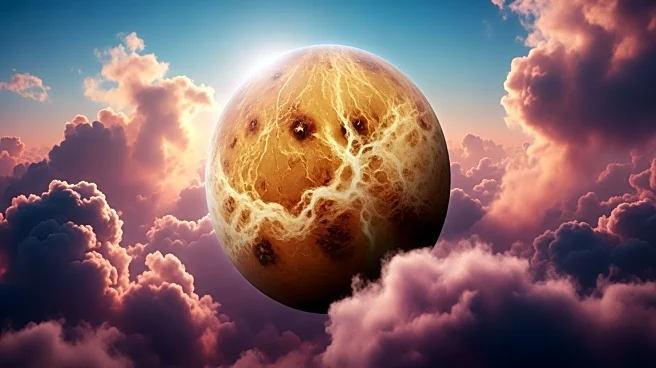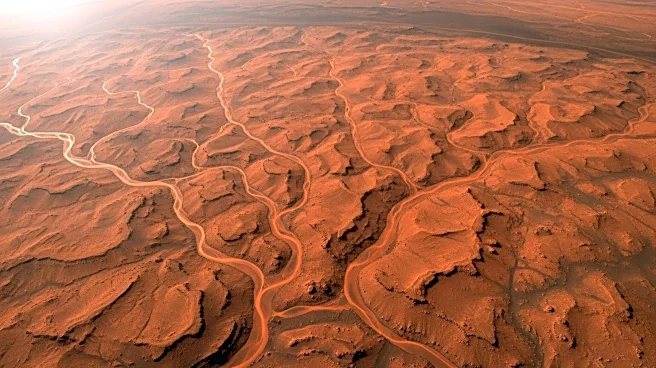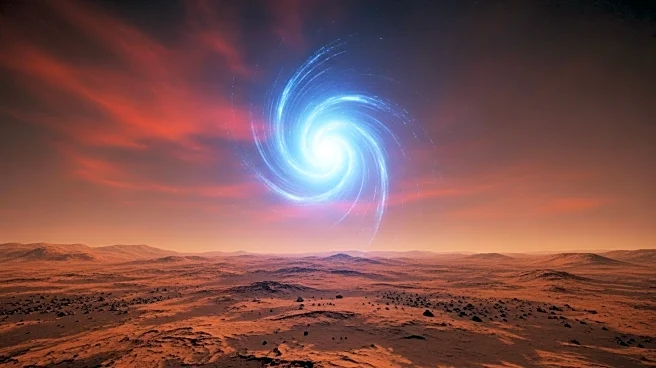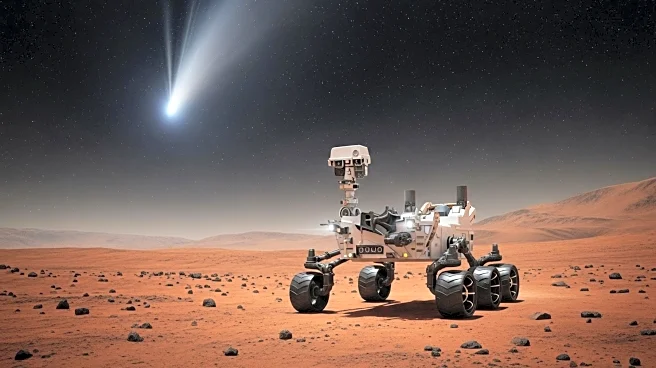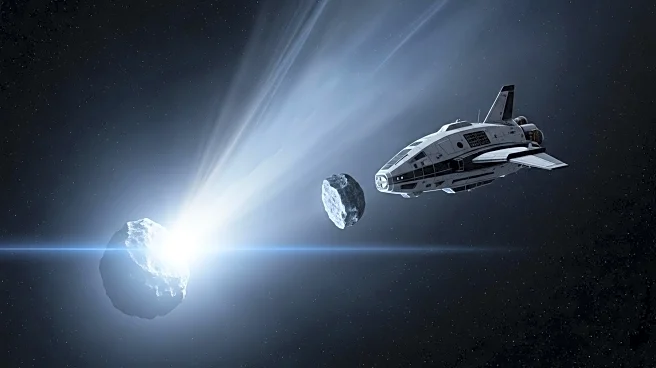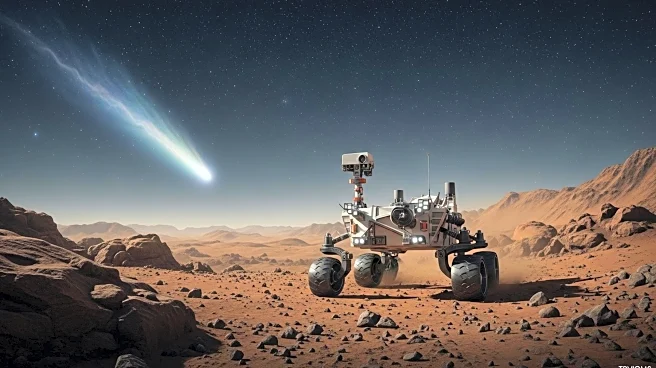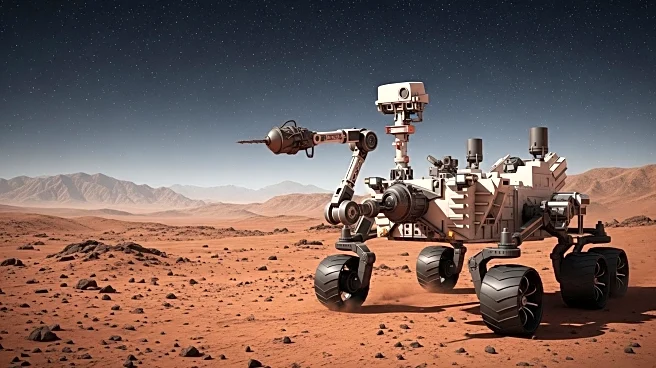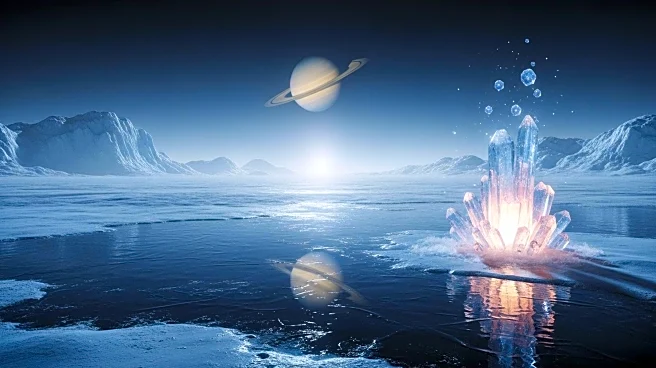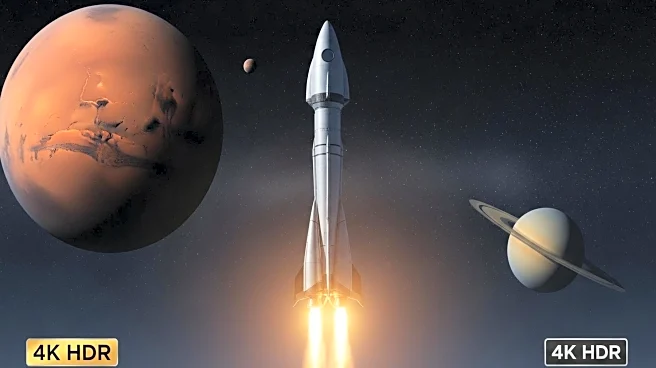What is the story about?
What's Happening?
A recent study has revealed that Uranus's moon Ariel may have a subsurface ocean up to 100 miles deep beneath its icy shell. The research indicates that Ariel's orbit once had enough eccentricity to cause significant tidal flexing, which generated internal heat and potentially melted parts of the moon's interior. This process could have thinned the ice shell and maintained a liquid ocean far from sunlight. The study also ties the moon's surface fractures and smooth plains to this subsurface ocean and the orbital tugging that stressed the crust until it fractured. The findings are based on models that align stress maps with observed fault orientations, suggesting that the moon's geological activity may have persisted until relatively recent times.
Why It's Important?
The discovery of a potential ocean on Ariel is significant as it adds to the growing list of celestial bodies in our solar system that may harbor subsurface oceans, which are considered potential habitats for life. Understanding Ariel's geological history and internal structure could provide insights into the processes that shape icy moons and their potential for supporting life. The presence of ammonia on Ariel's surface, which degrades quickly under space conditions, suggests a fresh supply from below, supporting the idea of ongoing geological activity. This discovery could influence future space missions, as the planetary decadal survey has recommended a Uranus Orbiter and Probe to further explore these findings.
What's Next?
A dedicated mission to Uranus, as recommended by the planetary decadal survey, could provide more detailed observations of Ariel's surface and subsurface. Such a mission would aim to map the moon's northern hemisphere, measure its gravity and magnetic fields, and analyze its surface composition. These efforts would help confirm the presence of a subsurface ocean and further understand the moon's geological history. The mission could also test predictions about the locations of fractures and ridges, providing a clearer picture of Ariel's internal dynamics.
AI Generated Content
Do you find this article useful?
